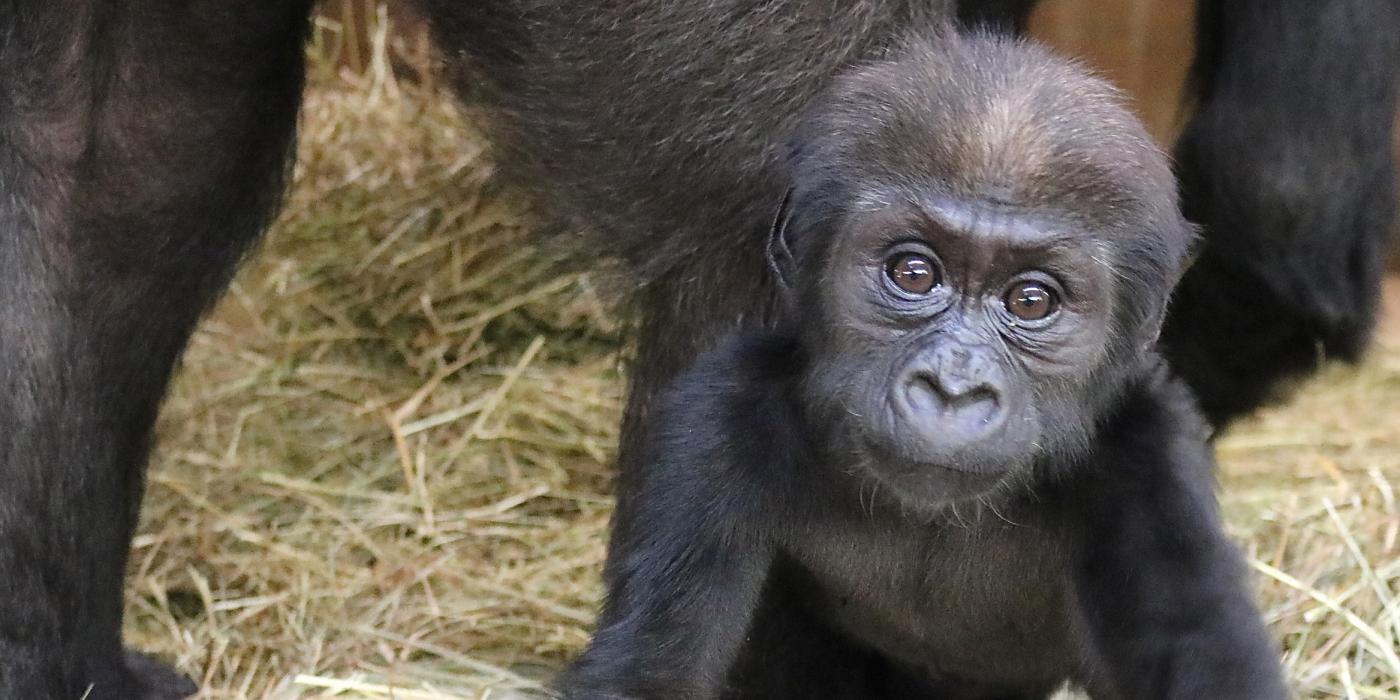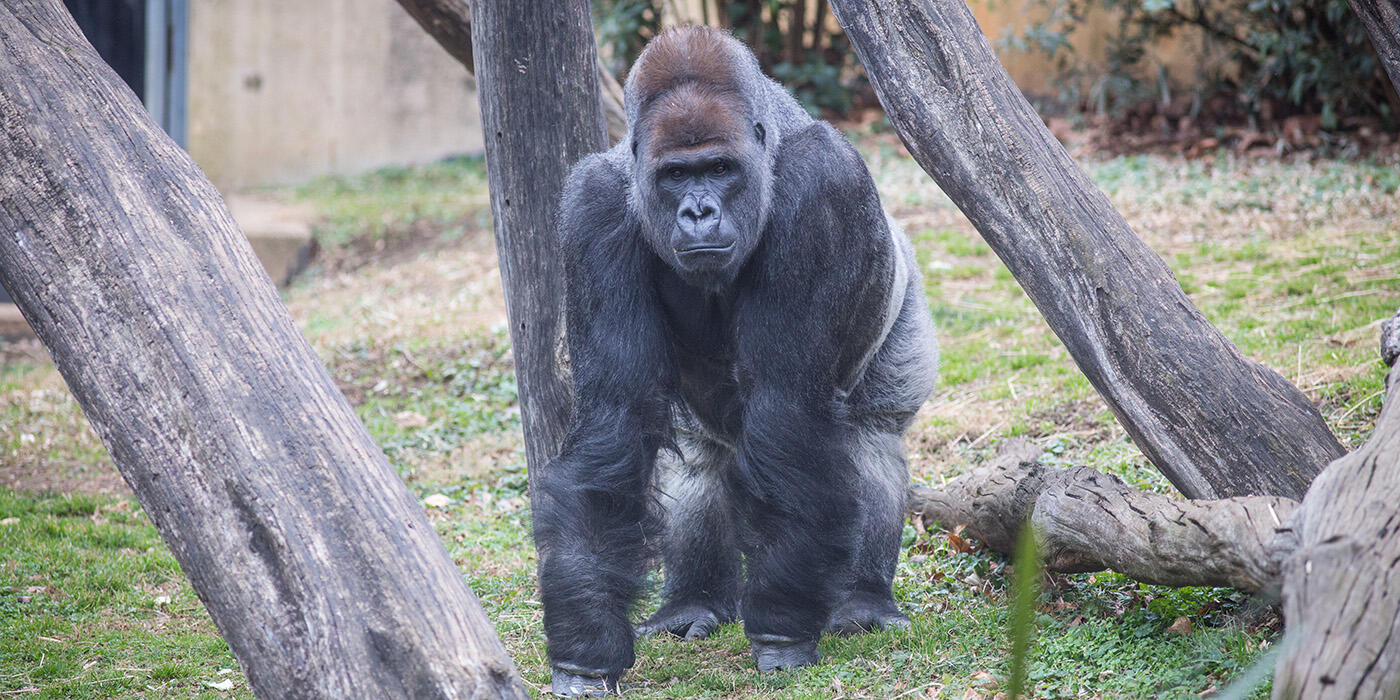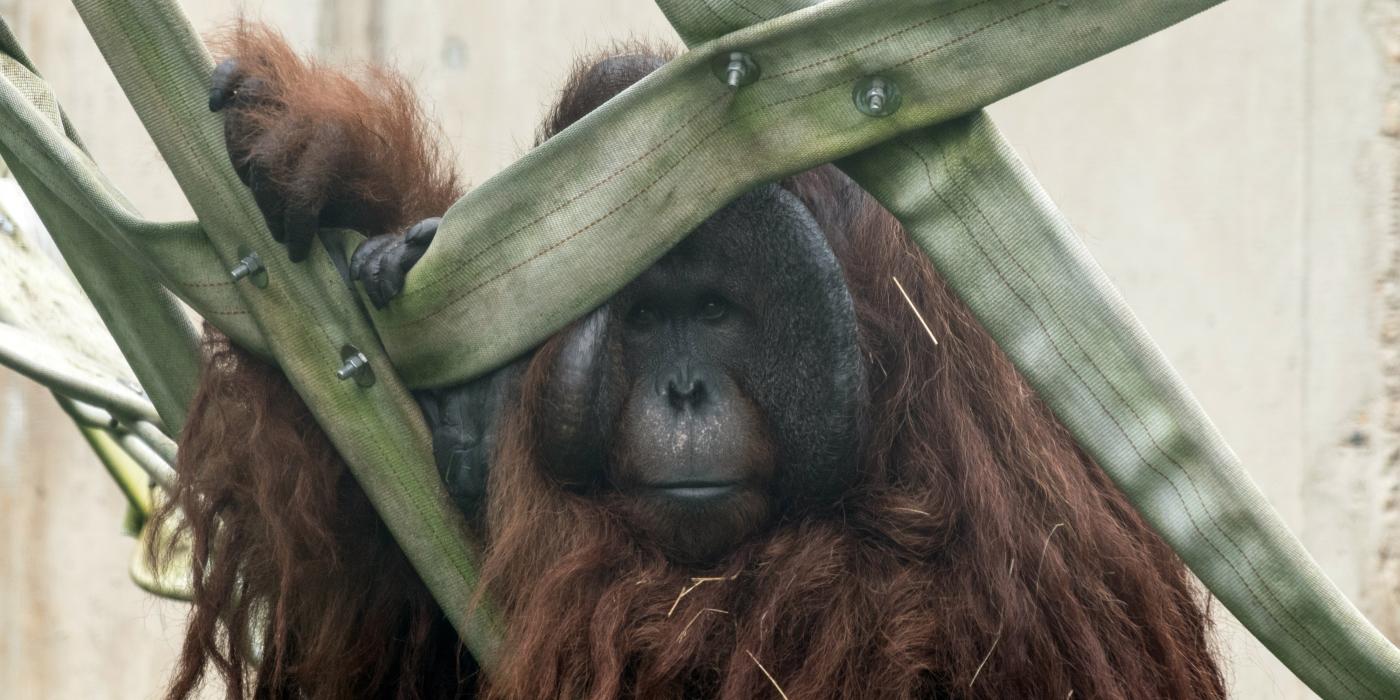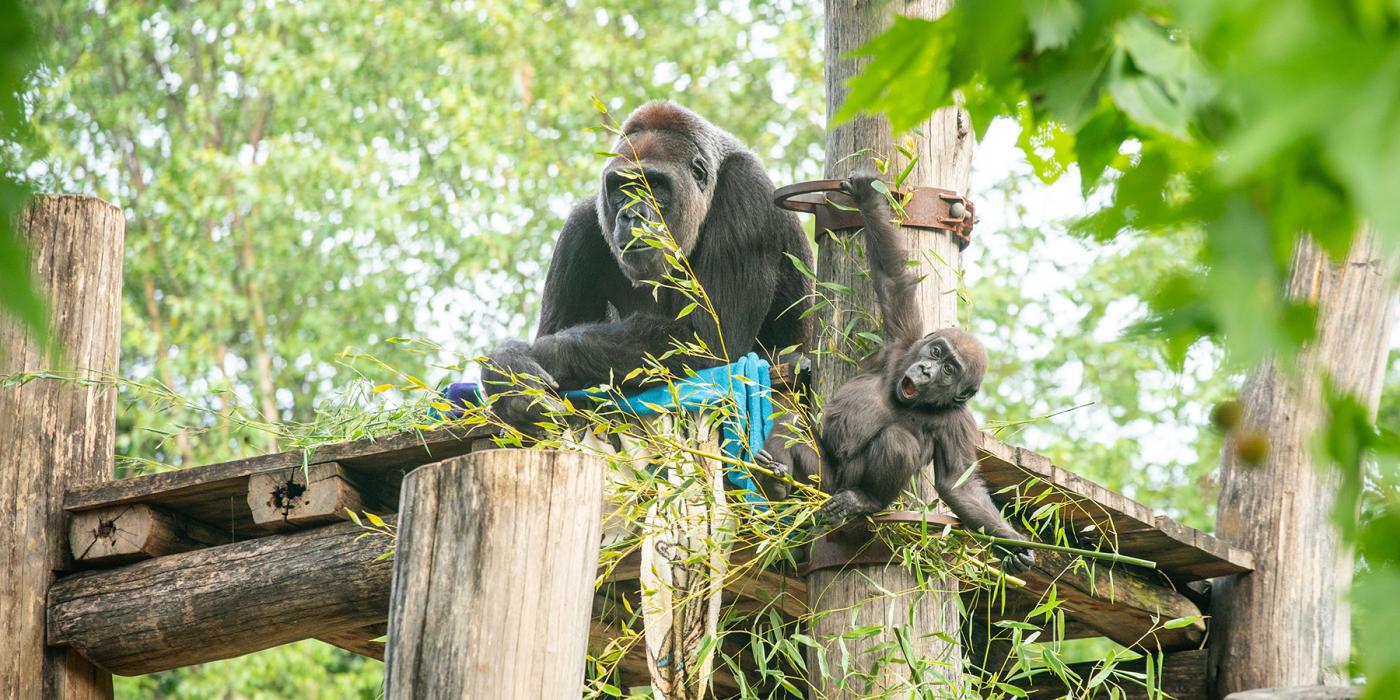#GorillaStory: Hanging Around with Moke (and Redd)

Melba Brown
One thing is undeniable: our 17-week-old western lowland gorilla infant, Moke, takes every opportunity to explore his surroundings at the Great Ape House. Even when he was a newborn, he would pay close attention to his environment and his troop members’ activities. Now that he is able to walk and climb on his own, our primate keeper team has watched Moke embark on a new era of discovery!
Related Species:



